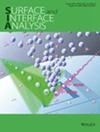Multiple graphdiyne-like chains self-assemble into carbon nanotubes
IF 1.8
4区 化学
Q4 CHEMISTRY, PHYSICAL
引用次数: 0
Abstract
The formation process of core–shell structure from multiple graphdiyne-like chains and carbon nanotube is investigated by a molecular dynamics simulation. Multiple graphdiyne-like chains self-curl into helical structures located inside carbon nanotubes. The entire process involves two steps: sliding and twisting. A detailed analysis is conducted on the formation mechanism. Both the van der Waals potential well and the π–π stacking interaction between carbon nanotube and graphdiyne-like chains play a major role in the self-assemble process. Furthermore, the influence factors such as the number of graphdiyne-like chains, the diameter of carbon nanotube, the length of carbon nanotube, the length of graphdiyne-like chains, and the simulation temperature is also investigated. The research results are an important theoretical basis for manufacturing high-quality carbon nanomaterials and other novel nanostructures.多个类石墨二炔链自组装成碳纳米管
分子动力学模拟研究了由多条类石墨二炔链和碳纳米管形成核壳结构的过程。多条类石墨二炔链在碳纳米管内自卷曲成螺旋结构。整个过程包括两个步骤:滑动和扭曲。我们对形成机制进行了详细分析。在自组装过程中,碳纳米管与类石墨二乙烯链之间的范德华势阱和π-π堆积相互作用都发挥了重要作用。此外,还研究了类石墨二炔链的数量、碳纳米管的直径、碳纳米管的长度、类石墨二炔链的长度以及模拟温度等影响因素。研究成果为制造高质量碳纳米材料和其他新型纳米结构提供了重要的理论依据。
本文章由计算机程序翻译,如有差异,请以英文原文为准。
求助全文
约1分钟内获得全文
求助全文
来源期刊

Surface and Interface Analysis
化学-物理化学
CiteScore
3.30
自引率
5.90%
发文量
130
审稿时长
4.4 months
期刊介绍:
Surface and Interface Analysis is devoted to the publication of papers dealing with the development and application of techniques for the characterization of surfaces, interfaces and thin films. Papers dealing with standardization and quantification are particularly welcome, and also those which deal with the application of these techniques to industrial problems. Papers dealing with the purely theoretical aspects of the technique will also be considered. Review articles will be published; prior consultation with one of the Editors is advised in these cases. Papers must clearly be of scientific value in the field and will be submitted to two independent referees. Contributions must be in English and must not have been published elsewhere, and authors must agree not to communicate the same material for publication to any other journal. Authors are invited to submit their papers for publication to John Watts (UK only), Jose Sanz (Rest of Europe), John T. Grant (all non-European countries, except Japan) or R. Shimizu (Japan only).
 求助内容:
求助内容: 应助结果提醒方式:
应助结果提醒方式:


